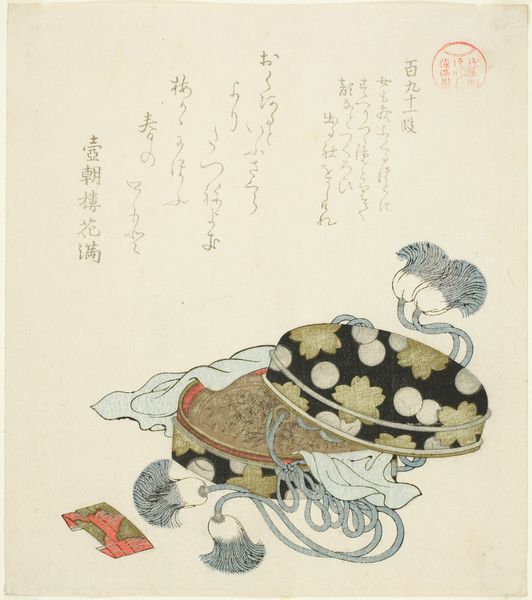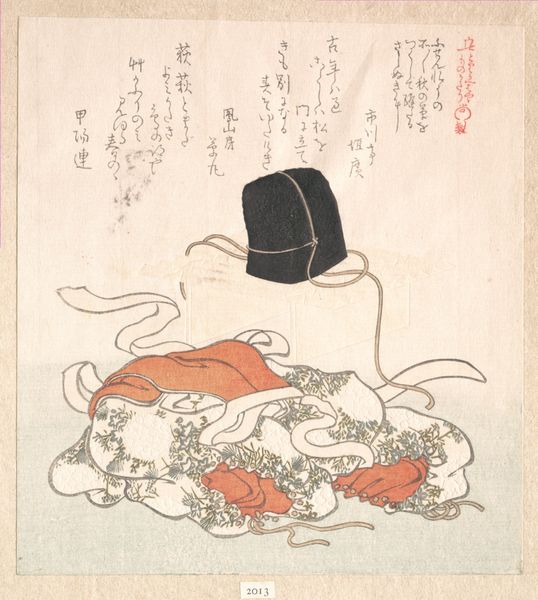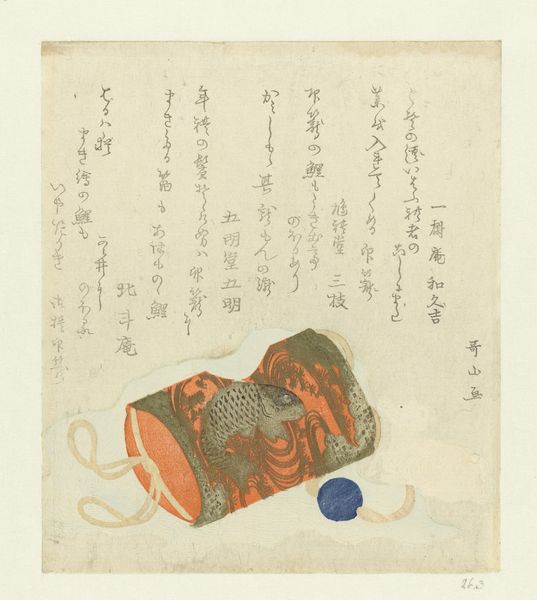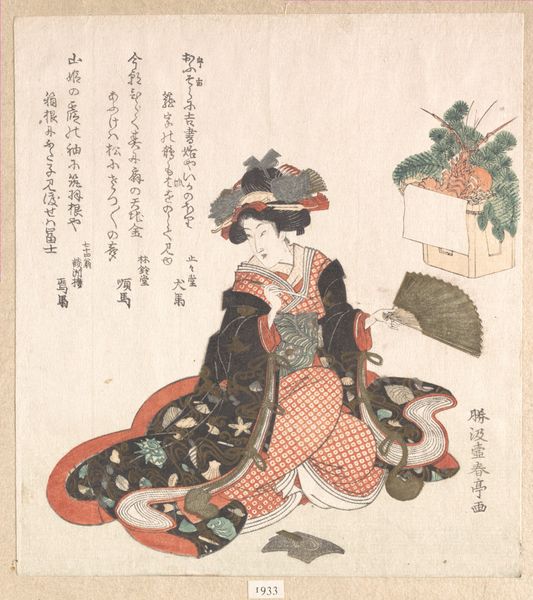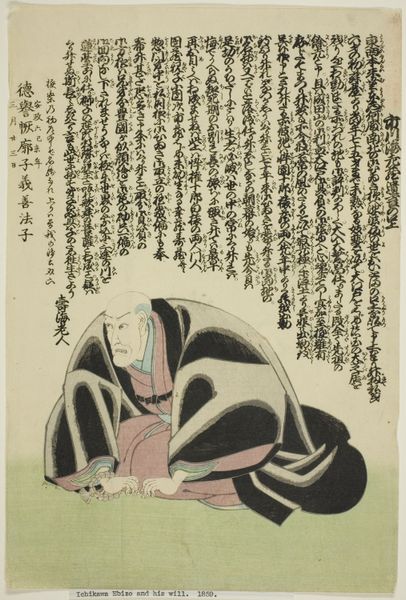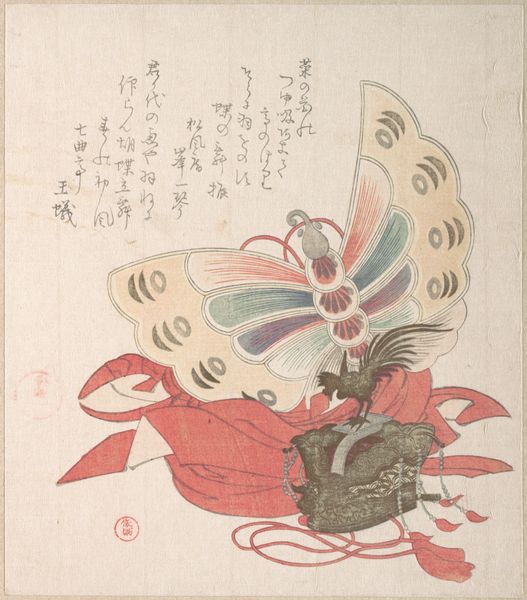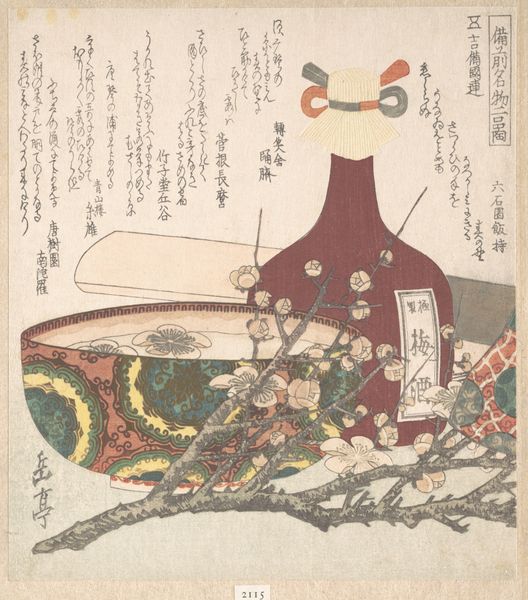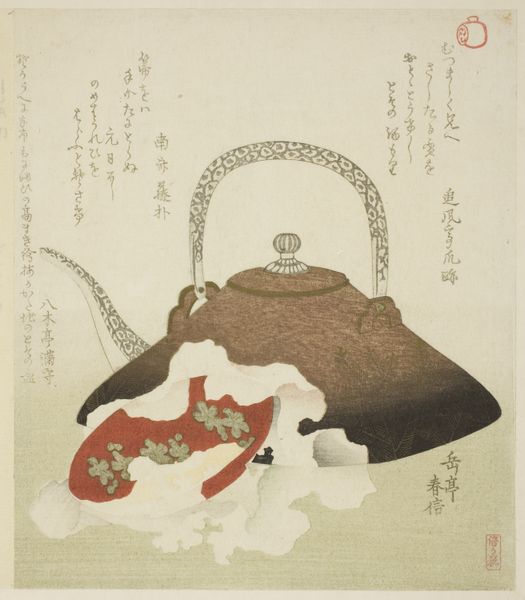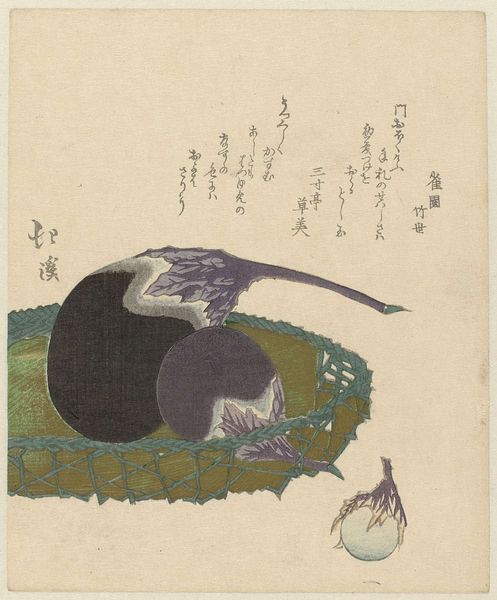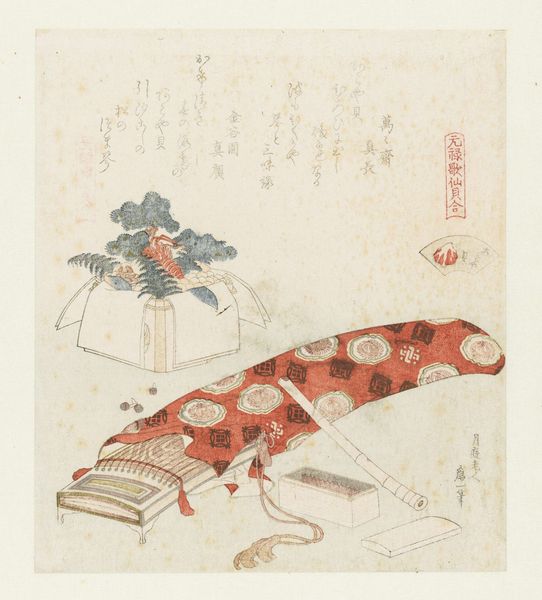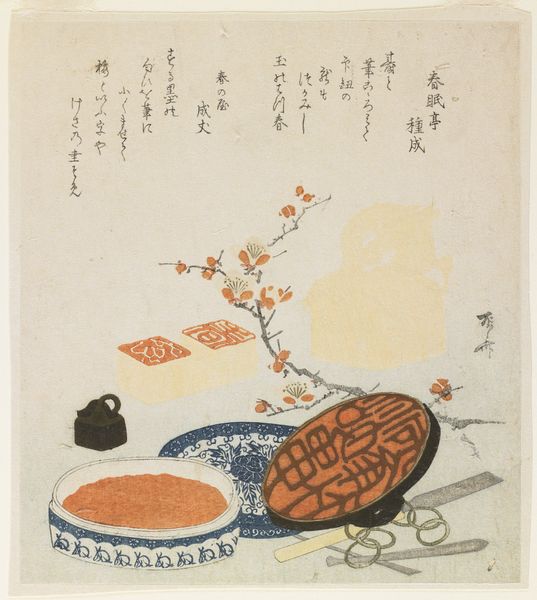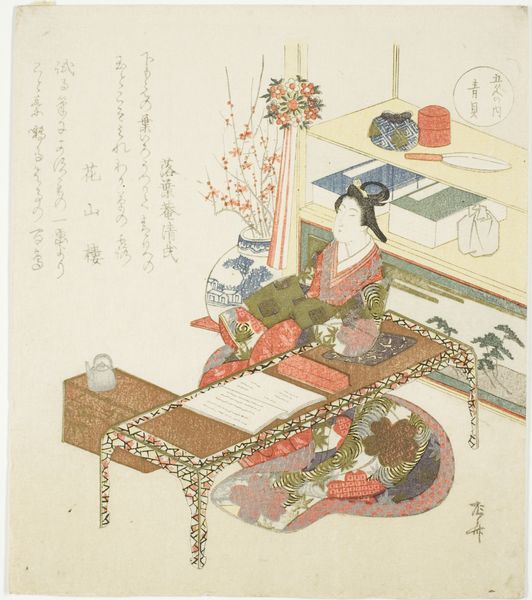
Passage 158 (Hyaku gojuhachi dan), from the series "Essays in Idleness for the Asakusa Group (Asakusagawa Tsurezuregusa)" c. early 19th century
0:00
0:00
# print
#
asian-art
#
ukiyo-e
Dimensions: 21.0 × 18.6 cm
Copyright: Public Domain
Editor: This is “Passage 158” from the series "Essays in Idleness for the Asakusa Group," a print made around the early 19th century by Kubo Shunman. The flat, graphic style is intriguing. What details stand out to you? Curator: I'm particularly interested in the production process of this ukiyo-e print. Notice how the layering of different colored woodblocks creates texture and depth. The registration of these blocks—slightly imperfect—tells a story about the labor involved. Editor: So, it's not just about the image itself, but about how it was physically made? Curator: Precisely. Think about the materials involved: the woodblocks, the paper, the inks. Each choice impacts the final outcome and also the audience reached. These prints, because they could be made relatively quickly, cheaply, and in great number, are so very important as documentation of popular trends in their time. How might its mass production affect our understanding? Editor: That’s fascinating. So, understanding how this print was made gives us a richer insight into the broader artistic culture of its time. It’s no longer a simple image, but an object with a history. I will never think about art the same again! Curator: Indeed! The materiality invites us to think about the artist's hand, but also the hands of the many artisans who contributed to its making and dissemination. Now consider who had access to this print and what did they use it for!
Comments
No comments
Be the first to comment and join the conversation on the ultimate creative platform.
